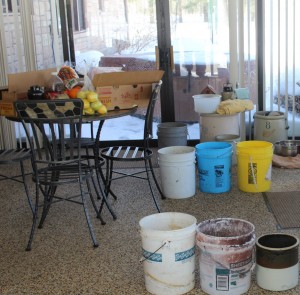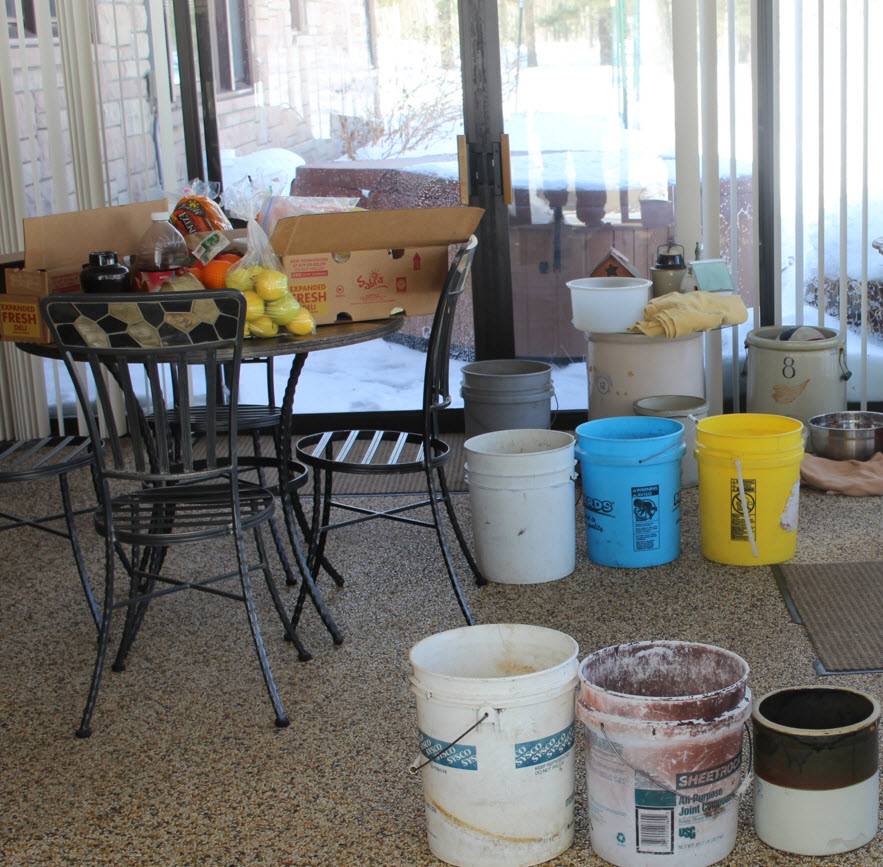Published Saturday, December 5, 2015 in the Arizona Republic as “Nix the income tax and make the rich richer: Arizona keeps cutting taxes as revenue increases, leaving little extra cash to perform routine maintenance.”
(in response to a prior My Turn from the Center for Economic Liberty advocating elimination of the state income tax from November 30, 2015).
My garbage disposal broke recently. Then I discovered it leaked, so I put a plastic bucket underneath it until I replace it. If nearly a decade passed and not only had I still not replaced it, but I had neglected other home maintenance, you would consider me an irresponsible homeowner. That’s exactly the approach we’ve taken in Arizona since 2008, and by now we have leaks all over and lots of plastic buckets and duct tape keeping our house together.
and duct tape keeping our house together.
Now imagine someone said every time you have a bit of extra money, instead of fixing the house, you should buy another bucket and give the rest away to rich people. You’d likely think that person was a crank. That’s precise what Stephen Slivniski of the Center for Economic Liberty advocates when he suggests we can eliminate the state personal income tax.
Over the last 20 years every time revenues have risen, state taxes, and primarily the personal income tax, have been cut, reducing our General Fund from what would have been $13 billion to just over $9 billion. Elected officials promised glowing economic growth and higher incomes and none of that has occurred. Instead our per capita income relative to other states has fallen, and we’re one of the few states with fewer jobs than in 2007.
Sure, eliminating the income tax would improve our business climate ranking, but business rankings are more for PR and correlate poorly with state economic prosperity . What does correlate are things like the high school graduation rate.
. What does correlate are things like the high school graduation rate.
Slivinski suggests limiting state government expenditure growth to 2.3 percent a year would enable us to gradually eliminate the income tax. That’s not even sufficient to match inflation and population growth. This means our child safety workers and teachers would likely see their pay effectively decline and continue to plummet relative to other occupations. The state would gradually eliminate investments in universities. Our schools would underperform, and our foster care system would remain in crisis mode.
to plummet relative to other occupations. The state would gradually eliminate investments in universities. Our schools would underperform, and our foster care system would remain in crisis mode.
Eliminating the income tax effectively transfers investments in these areas back to the people who pay the most income taxes, the wealthy. If the sales tax base is broadened, then the cost is also transferred directly to lower and middle income Arizonans.
But what about the added growth we’re promised? A 2012 study commissioned by the U.S. Small Business Administration found “no evidence of an economically significant effect of state tax portfolios on entrepreneurial activity.” Among states that have cut income taxes, Slivinski cites North Carolina, which has modestly exceeded the national employment growth rate. He omits Kansas, Wisconsin, Ohio, Maine, Rhode Island, Louisiana, as well as Arizona that have fared poorly. Unlike Arizona, states with no income tax typically have an external source of revenue, whether it’s oil in Texas or gambling tourism in Nevada. Furthermore, all of these states spend more on education per student than Arizona.
found “no evidence of an economically significant effect of state tax portfolios on entrepreneurial activity.” Among states that have cut income taxes, Slivinski cites North Carolina, which has modestly exceeded the national employment growth rate. He omits Kansas, Wisconsin, Ohio, Maine, Rhode Island, Louisiana, as well as Arizona that have fared poorly. Unlike Arizona, states with no income tax typically have an external source of revenue, whether it’s oil in Texas or gambling tourism in Nevada. Furthermore, all of these states spend more on education per student than Arizona.
Yes, we are finally starting to see added revenues to the state treasury. Our first priority should be getting Arizona’s house back in good repair, not buying another bucket and giving the rest away to rich people.
Dave Wells is research director for the Grand Canyon Institute, a nonpartisan centrist fiscal policy think tank.
 Commentary
Commentary

